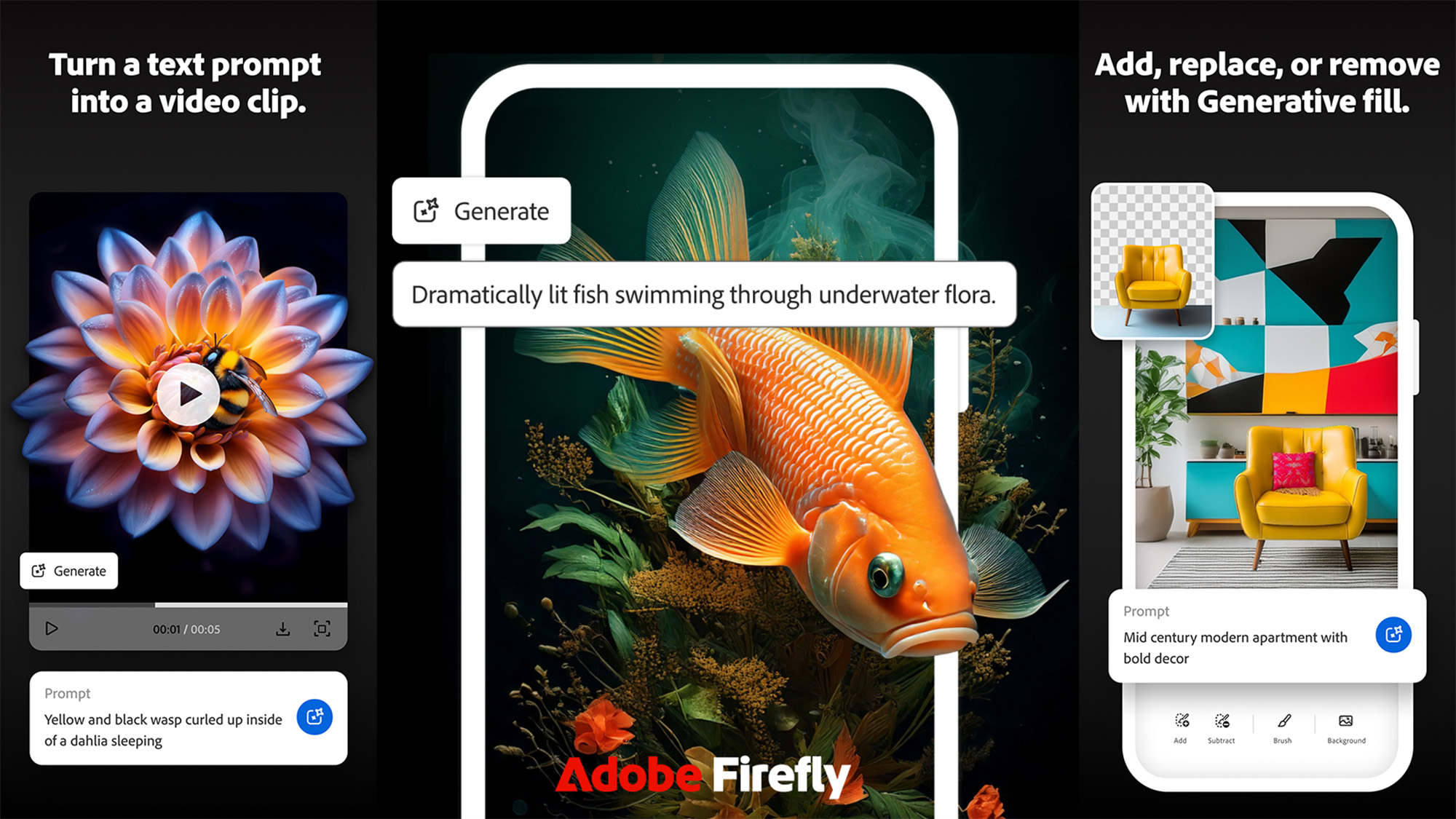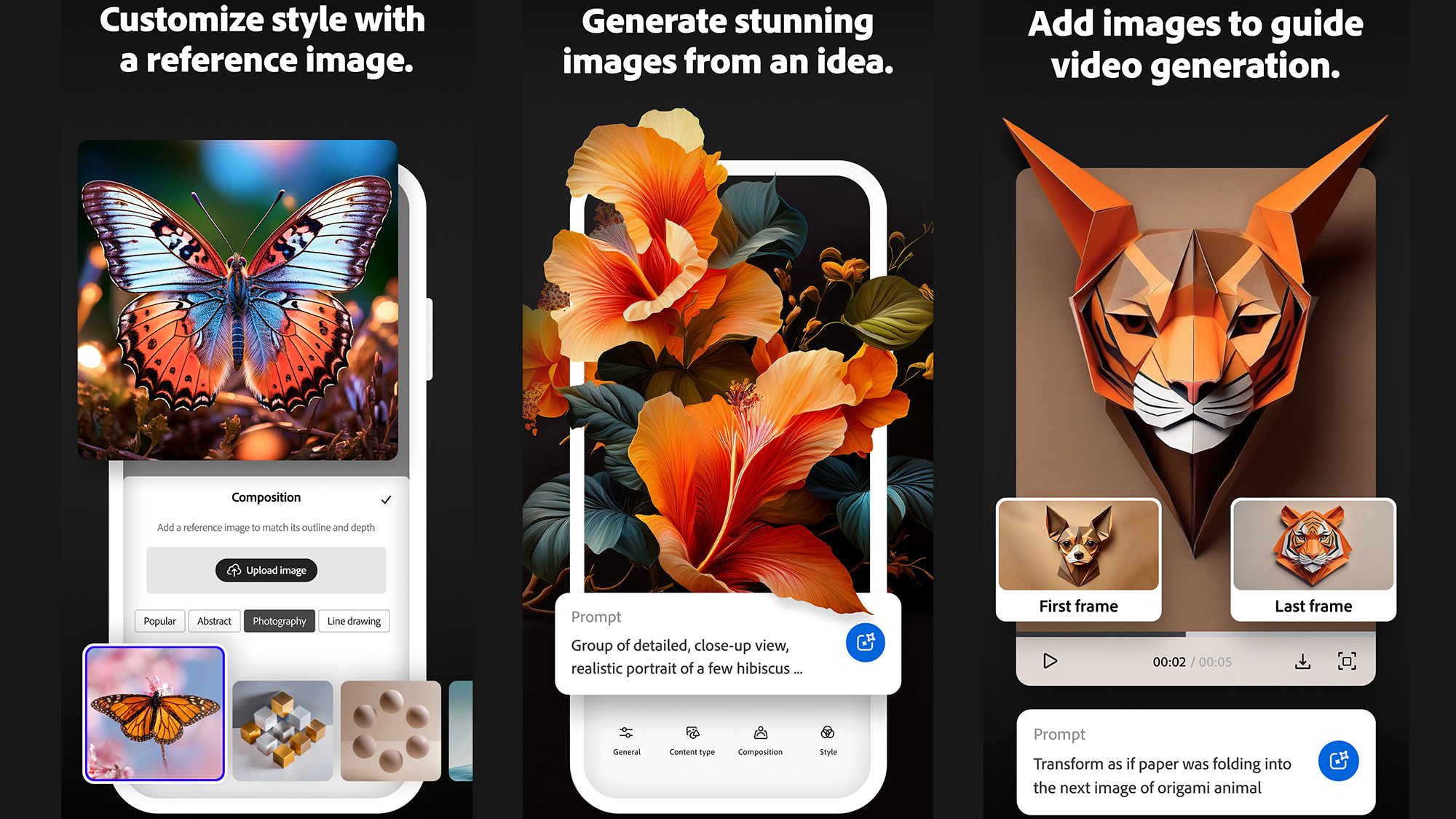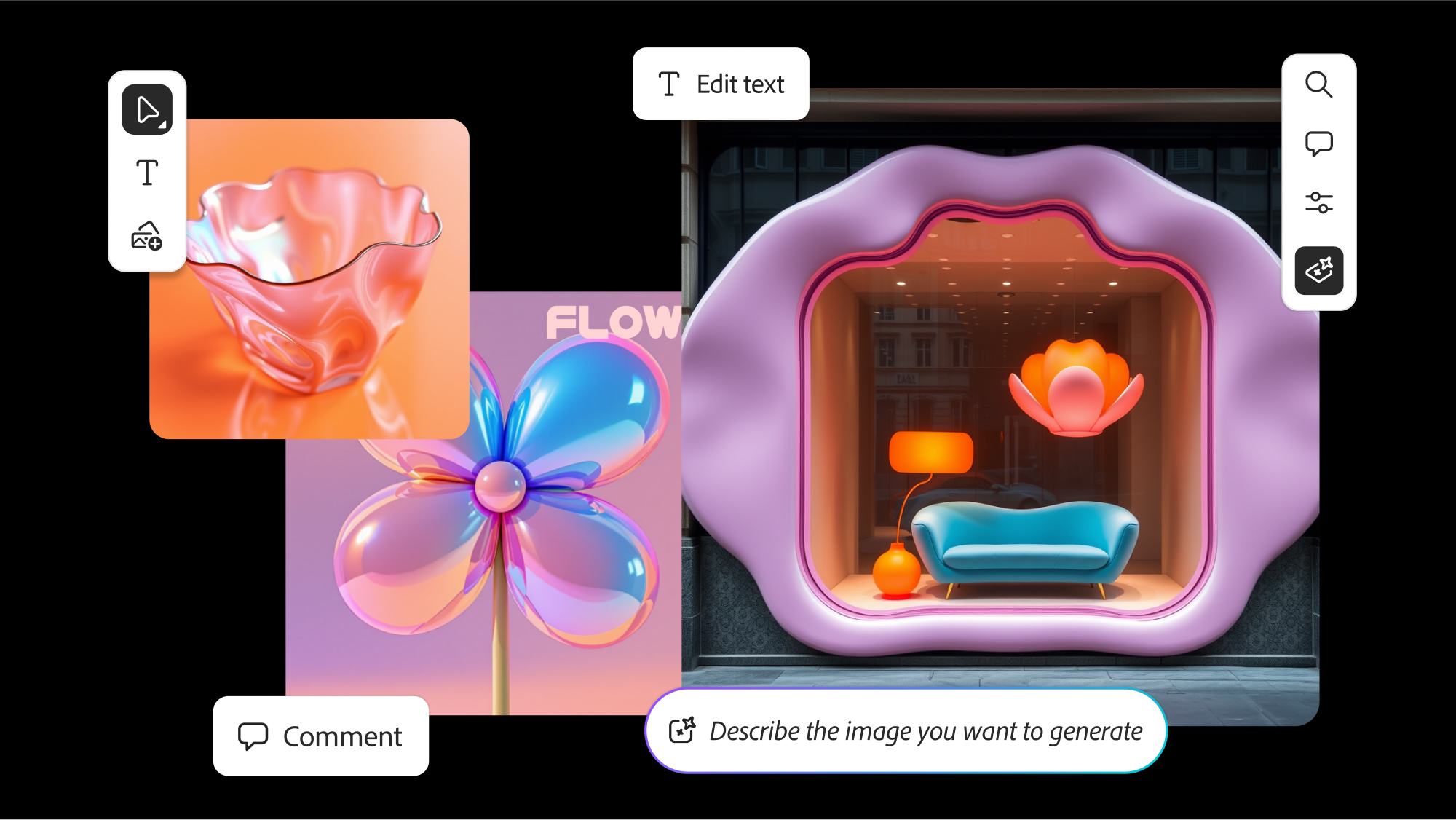Adobe puts AI in the palm of your hand with new Firefly smartphone app
AI on the go: Adobe launches Firefly app and partners with more third-party AI models to boost Firefly’s generative performance

Adobe is launching a Firefly mobile app for iOS and Android, while Adobe Firefly itself is getting supercharged thanks to a major update. The partially free-to-use AI generator will broaden its generative abilities by adding four more third-party AI models, while also enhancing its new online moodboard generator, Firefly Boards, which was announced at Adobe MAX.
The launch of the Firefly mobile app means you can generate AI imagery whenever, wherever, in the palm of your hand. If that doesn’t sound one step closer to a Star Trek replicator, I don’t know what does! The app makes use of the same generative-AI tech found in Adobe’s desktop software, allows users to make use of third-party AI models, and can generate video footage, posters, blogs, presentations, you name it.

As you’d expect, the Firefly app allows you to enter a prompt and choose your desired image or video or tweak your wording some more. But as a creative, Firefly offers more flexibility than simply generating imagery. It can also help you animate a still image and remove (and even replace) unwanted objects. But from a content creator’s standpoint, I think the AI-powered software’s ability to use Generative Expand to reorient imagery for social media – on your phone – could prove a huge timesaver. All in all, the app provides users with access to Generative Fill, Generative Expand, Text to Image, Text to Video, and Image to Video.
And if you like to work across devices, the Firefly app saves creations in the Creative Cloud, so you can seamlessly swap from app to desktop and desktop to app. And, you can choose to work with Adobe’s commercially safe AI models exclusively or the range of third-party AI models.

Alexandru Costin, Adobe’s Vice President of Generative AI, says; “We built the Firefly app to be the ultimate one-stop shop for creative experimentation—where you can explore different AI models, aesthetics, and media types all in one place. Every new partner model we add gives creators even more flexibility to experiment, iterate, and push their ideas further.”
When it comes to Adobe’s AI-model partners, it was already using image and video models from OpenAI, Google, Black Forest Labs, and Adobe itself, and now Ideogram, Luma AI, Pika, and Runway will join the fray. Adobe has also revealed that Google’s latest text-to-image model, Imagen 4, will bolster Firefly’s Text to Image, while Google Veo 3 will enhance Text to Video and Image to Video features.

The new AI-model additions will launch first in Firefly Boards, which boasts extensive upgrades. Chief of which is the ability to generate and add video as well as text to video, made possible by Firefly’s new partner AI models. Users can also make iterative edits to images, have their cluttered boards neatly arranged in a single click, and link Adobe documents, so changes in other Adobe apps sync to their board.
The best camera deals, reviews, product advice, and unmissable photography news, direct to your inbox!
“Ideating with Firefly Boards is like an AI-powered creative jam session,” says Alexandru Costin, “where creative professionals can riff across media types, explore ideas together and turn sparks of inspiration into production-ready concepts.”
The Adobe Firefly app can be downloaded from the Apple App Store and Google Play .
You might also like...
Want more Adobe news? Adobe is raising prices again – but All App plan users can skip AI features and actually save money. Plus, big Photoshop updates announced at Adobe Max 2024 puts AI front and center. And if you're new to Firefly, here's how to make Adobe Firefly generative AI work for you, not against you.

Mike studied photography at college, honing his Adobe Photoshop skills and learning to work in the studio and darkroom. After a few years writing for various publications, he headed to the ‘Big Smoke’ to work on Wex Photo Video’s award-winning content team, before transitioning back to print as Technique Editor (later Deputy Editor) on N-Photo: The Nikon Magazine.
With bylines in Digital Camera, PhotoPlus: The Canon Magazine, Practical Photography, Digital Photographer, iMore, and TechRadar, he’s a fountain of photography and consumer tech knowledge, making him a top tutor for techniques on cameras, lenses, tripods, filters, and more. His expertise extends to everything from portraits and landscapes to abstracts and architecture to wildlife and, yes, fast things going around race tracks...
You must confirm your public display name before commenting
Please logout and then login again, you will then be prompted to enter your display name.
